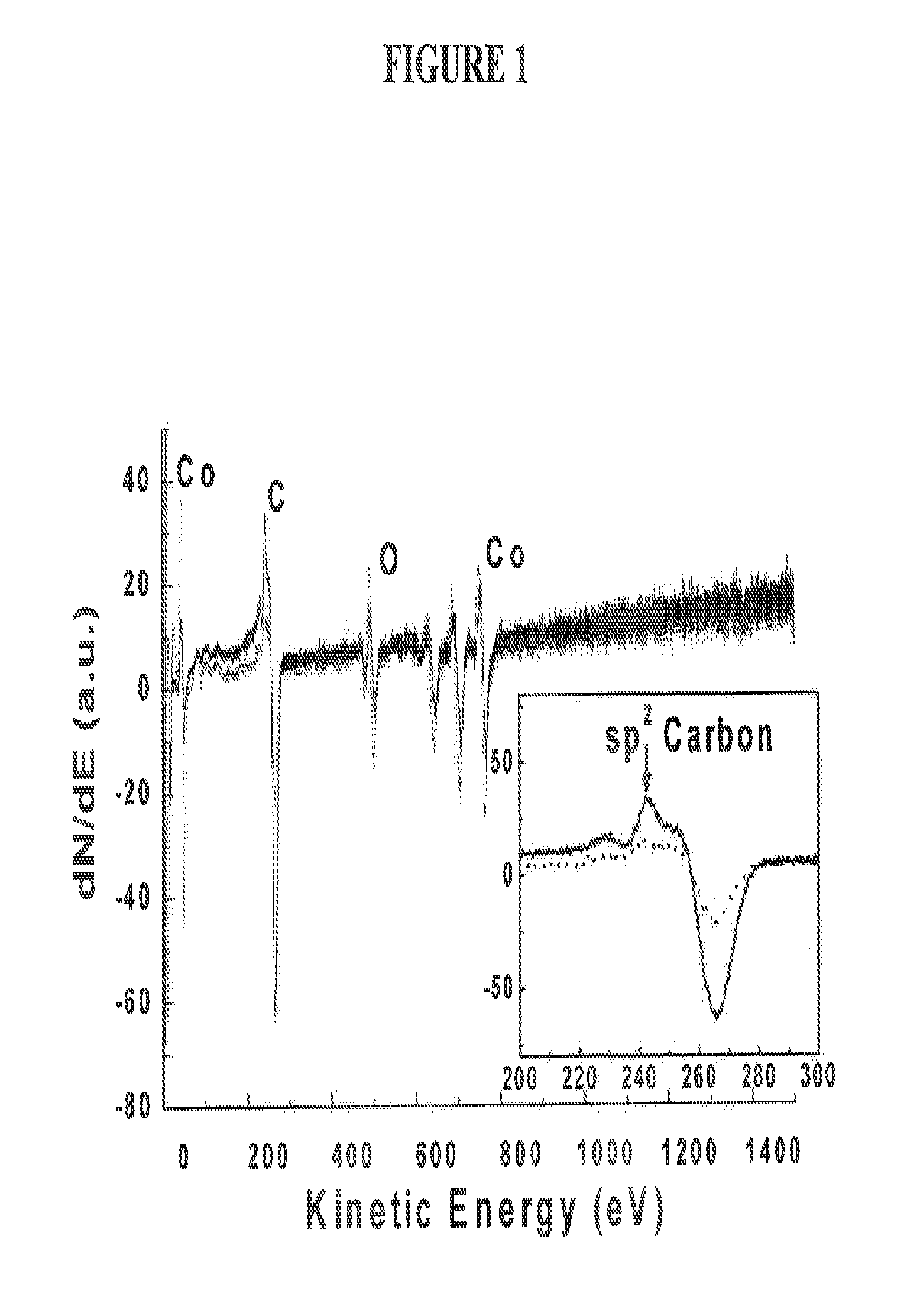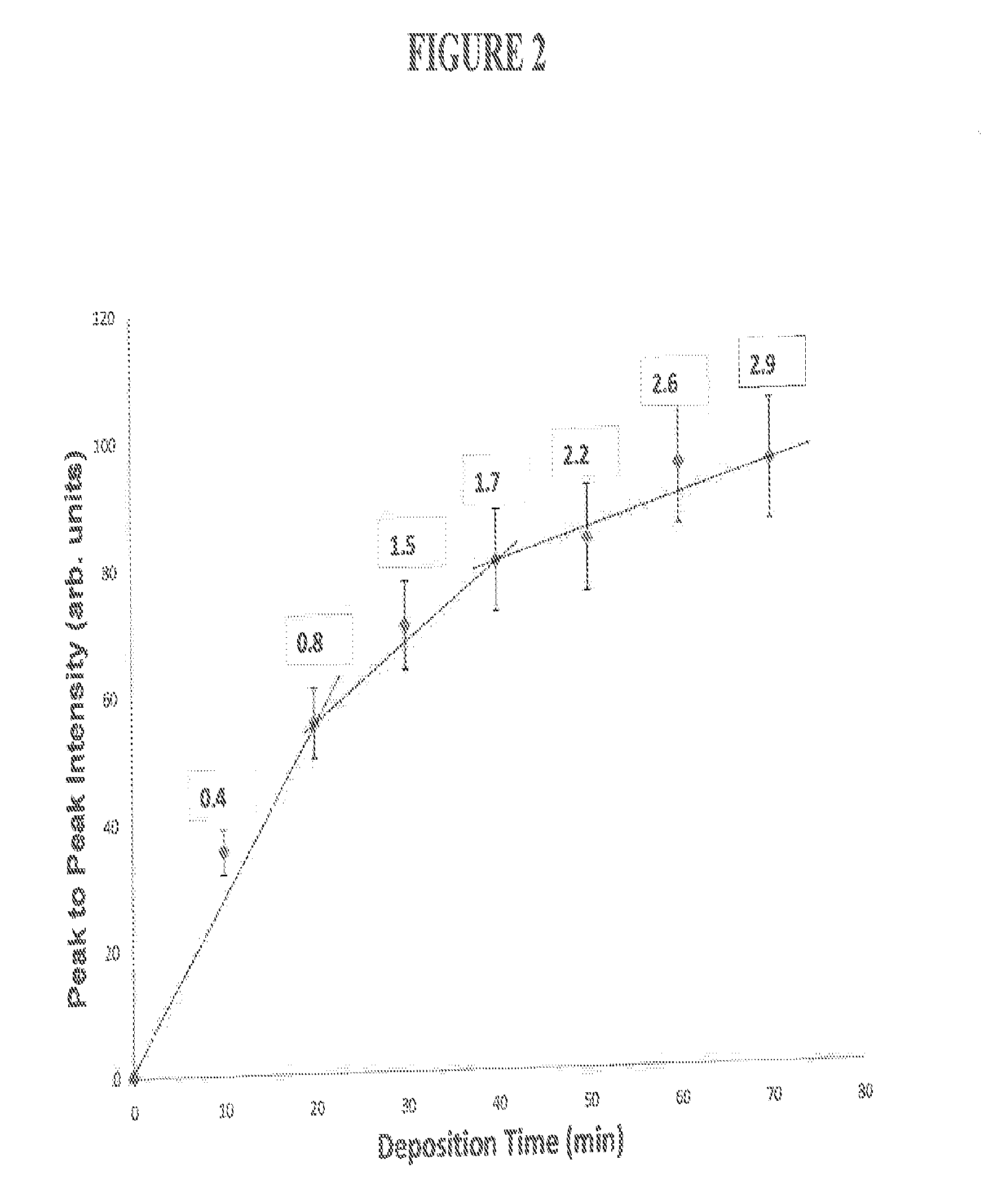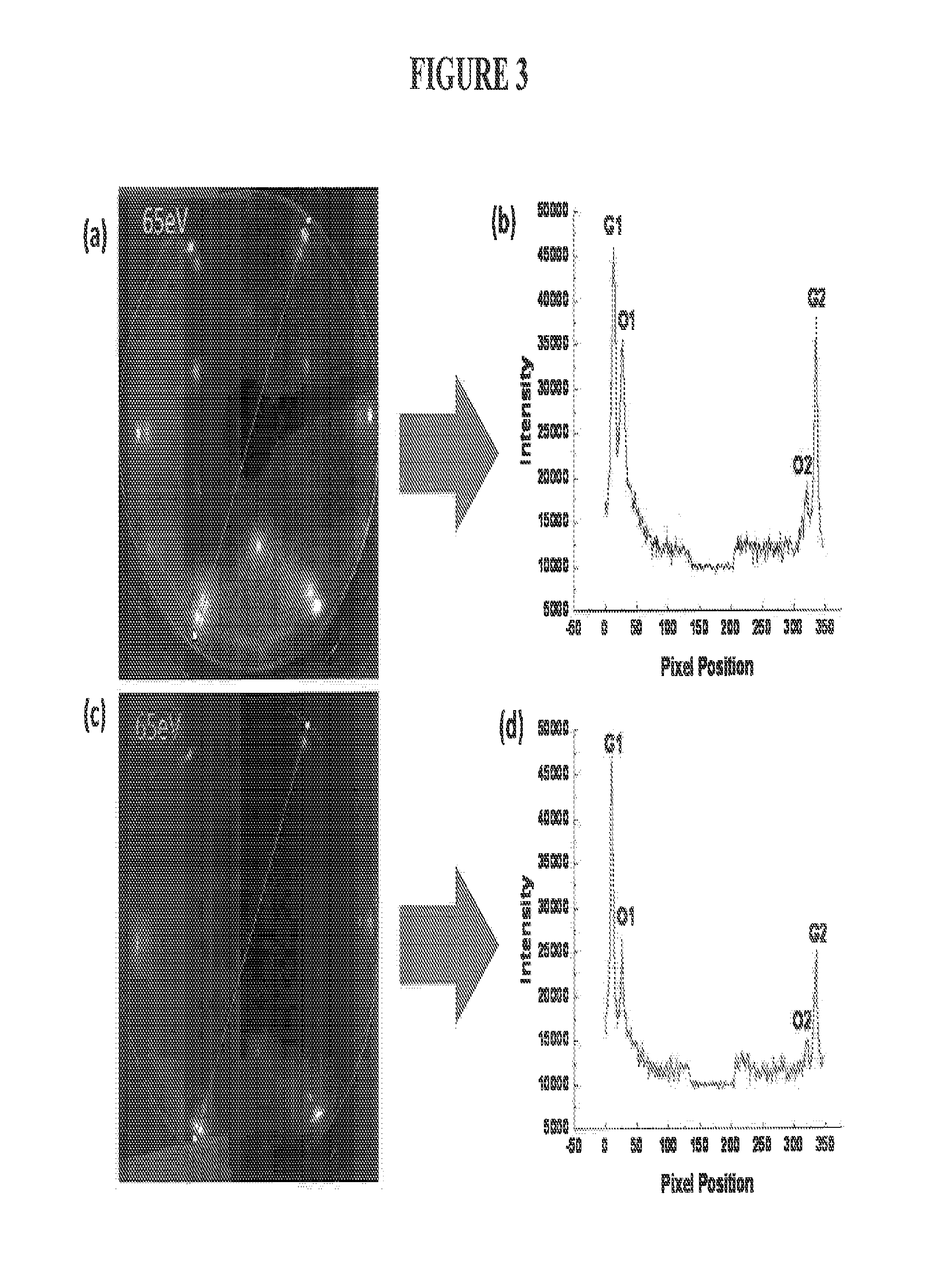Direct Growth of Graphene by Molecular Beam Epitaxy for the Formation of Graphene Heterostructures
- Summary
- Abstract
- Description
- Claims
- Application Information
AI Technical Summary
Benefits of technology
Problems solved by technology
Method used
Image
Examples
Embodiment Construction
[0015]AES and LEED studies were carried out in a system described previously [17], but equipped with a commercially available multisource cell for electron beam-induced evaporation of Co and carbon from Co rod and graphite rod targets. The evaporator / sample distance was ˜9 cm. Co films ˜50 Å thick were deposited from a Co rod at 750 K onto 1 cm2 Al2O3(0001) substrates. The base pressure in the chamber was ˜3×10−10 Torr, which increased during deposition to ˜5×10−9 Torr. Pressures remain below 1×10−8 throughout. Films were subsequently annealed in ultrahigh vacuum (UHV) to 1000 K, which allowed oxygen—dissolved in the Co film during deposition—to segregate to the surface and form a surface oxide film ˜3 ML thick, as determined by XPS (see below). Graphene films were deposited from a graphite rod with the sample at 1000 K. AES and LEED data were acquired after each deposition of carbon. XPS studies were carried out in a separate UHV chamber described previously [18], using a non-monoc...
PUM
 Login to View More
Login to View More Abstract
Description
Claims
Application Information
 Login to View More
Login to View More - R&D
- Intellectual Property
- Life Sciences
- Materials
- Tech Scout
- Unparalleled Data Quality
- Higher Quality Content
- 60% Fewer Hallucinations
Browse by: Latest US Patents, China's latest patents, Technical Efficacy Thesaurus, Application Domain, Technology Topic, Popular Technical Reports.
© 2025 PatSnap. All rights reserved.Legal|Privacy policy|Modern Slavery Act Transparency Statement|Sitemap|About US| Contact US: help@patsnap.com



